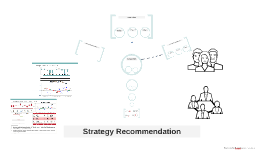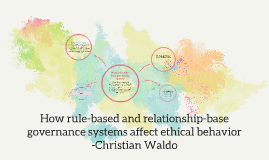Business strategy presentation
Transcript: In the past decade the UK economy has shifted from a 'Service Economy' to a 'Experience Economy'. Commodities-----Goods---------------Service-------------Experience Commoditized Commoditized E-Ticketing. Sustainability. Competitive strategies LAUNCH - organisations deliver modified or new products (or services) to existing markets. Ticket touts have been a constant concern to any company for driving up prices. The Festival market is growing. In-direct competition, e.g. hot tub cinema, pop-up events and tough mudders. CONSOLIDATION Boston Matrix for a Large Venue in London Beverland et al (2001) Company Analysis Conception - Launch - Growth -Consolidation - Decline - Revival Trends that affect the Eventim Apollo The growth of the Live Music Sector Bruce Springsteen was one of the earliest opponents of the merger, warning that it would create "a near-monopoly situation" (Allen, 2010) Primarily focused on property development. Venues total £171 million, which is 7% of total profit. The company has an aim to have Olympia as a standalone venue by 2015. Plans have been submitted for a hotel on site, and to re-instate and enhance entrances to Olympia. Strategy is to make Olympia a leader in the exhibiton business. Key Players Hucker, 2014, p. 105. 8.1 million + The threat of new entrants The impetus from artist to focus more on their live shows Joint Ventures Online Ticketing partnerships The types of entertainment on offer Has no public funding. Turnover is invested in to venue improvement and promoting the Arts and Sciences. 6 Honorary fellows of the Royal Albert Hall and other supporters such as Westminster Council, The Band Trust,Cirque du Soleil and Sharegift. Public can also donate money and support the hall by volunteering. AEG Live How Have The UK's Banking Markets Changed Over The Past 10 Years? Business Trends Declining sales in recorded music. Venue Improvement. Online ticketing services. Increased number of sponsors. Diversification of performances. Increased use of social media platforms. 'Historic' artists re-forming. Increased profits in condiments sales, driven by higher focus Market Development involves offering existing products to new markets Adapted from Joseph Pine, 2004. Age and Wealth Distribution Companies compete both directly and within a sector.. Offering live music as well other performances and events. E-Tickets. Performance. Architectural Innovation Consumers may believe that promoters are increasing prices due to greed, this is not neccessarily the case with artist demanding higher booking fees. AEG own the largest venues in London, nearly eliminating competition. Prior this was Live nation. The reduction in CD sales due to pirate downloads has meant that venue tours, as well as festivals, has become one of the most important revenue streams. Porter's 5 forces Home of UK culture SWOT Analysis for Live Nation Why has the industry grown? Acquisitions Retaliation From Competitors Legal Constraints Commodities are fungible, goods are tangible, services intangible, and experiences are memorable. (Gilmore et al, 1999, Pp. 11-12). UK Live Music What is our chosen sector? DECLINE Trends of the Live Music Sector - involves offers of existing products to new markets (Hucker, 2014, Pp. 5) Change in target market REVIVAL The Jockeying among current contestants Capital City Consumer Trends Spectacularisation of events. Technology Music Tourism Diversity of acts Environmental sustainability New Government Legislation Live nation is the largest music promoter in the UK and divides the type of venues by size. (Hucker, 2014, pp. 41-42) Music Tourism How trends affect the O2 Arena GROWTH Office for Fair Trading Product life cycle vs Event Life cycle SWOT Analysis of the Live Music Venues Ticket sales for 2011. Future opportunities and risks Defining the industry sector a monopolised market? The Corporation of the Hall of Arts and Sciences CONCEPTION Advanced technology In 2010 the Justice Department approved the merger of Ticketmaster and Live nation after a year long investigation. Live nation is the largest presenter of live music and entertainment events. AEG is second. The threat of substitute products or services The live music sector is valued at £1,190 million and expected to rise to £1,435 million by 2018. - Implies increasing share of current markets with current product range Allen, K and Wearden, G. (2009). 'Competition Commission opposes Ticketmast and Live Nation merger.' Guardian. 8th Oct. [Electronic version] Accessed 19/03/2014. AEG. (2012). AEG 1 Earth - 2012 Sustainability report. [Online] Available at: http://aegworldwide.com/media/swf/2012_sustainability_report/index.html (Accessed on 19/03/2014) Competition Comission. (2013) AEG/Wembley Arena - Live Nation: Initial comments to the Competition Commission. [Online] Available at: competition-commission.org.uk/assets/competitioncommission/docs/2013/aeg-wembley-arena/130520_ln_initial_submission.pdf. (Acessed on 19/03/2014).

















